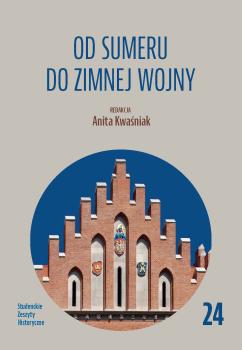Śmierć w starożytnym Egipcie oczami Greka – egipskie rytuały pogrzebowe w ujęciu Diodora Sycylijskiego w Bibliotheca historica .......... 25
Synopsis
DEATH IN ANCIENT EGYPT THROUGH A GREEK LENS: EGYPTIAN FUNERARY CUSTOMS IN DIODORUS SICULUS’ BIBLIOTHECA HISTORICA
The civilization of ancient Egypt has fascinated people for centuries, and it is astonishing in its art, architecture, belief system, and customs. Interest in the land of the pharaohs attracted throngs of people to the Nile – some wrote down their observations or the stories they heard about Egyptian history, customs, and cults. One such traveler (alongside Herodotus of Halicarnassus) was the Greek historian Diodorus Siculus (1st century BCE), who decided to describe Egypt in his monumental work, Bibliotheca historica (Gr. Βιβλιοθήκη ἱστορική). In Book I of the Bibliotheca historica, dedicated to Egypt, Diodorus, in addition to describing among other things the nature, customs, and history of the land of the pharaohs, devotes considerable space to Egyptian beliefs, such as the functioning of temples, priests, and cults. The historian focuses mainly, alongside zoolatry, on funerary rituals and afterlife beliefs. This article aims to analyze the fragments of Book I of the Bibliotheca historica devoted to Egyptian funerary rituals. This analysis will assess the consistency of the information provided by Diodorus with the actual funerary rites practiced in Egypt. It will also reconstruct the author’s knowledge and attitude towards the Egyptians, their beliefs, and their customs. Diodorus is greatly impressed by the complexity of funerary customs and the meticulousness of the Egyptians throughout the entire process of burying the dead. The historian repeatedly emphasizes the originality of Egyptian rituals, which, according to him, may surprise Greeks and Romans. Diodorus describes the course of funerary rituals quite faithfully and in detail for an observer – starting with mourning (and its accompanying practices, such as the prohibition of entertainment and wine consumption, covering the head with mud), through mummification (including the individual stages, the work of embalmers, and the ingredients used during this process), to the funeral (e.g., the ritual judgment of the deceased). Of course, the historian was not free from inaccuracies or omissions (e.g., the lack of description of some funerary practices). However, it should be stated that his work (which also supplements some of the information provided by Herodotus) is a valuable source for researchers of Egyptian funerary customs. Furthermore, Diodorus explained the reasons for carefully treating corpses in ancient Egypt. According to him, this stems from the character traits of the Egyptians, such as kindness, nobility, and attachment to family and tradition. Diodorus does not see other possible factors that influenced Egyptian funerary rituals and “care for the dead”, such as Egyptian eschatology. This narrative is one of the elements of building a positive image of Egypt and its inhabitants. The fascination with the land of the pharaohs, visible in the Bibliotheca historica, including in the fragments devoted to Egyptian funerary practices, is part of a broader trend of ancient Egyptomania. Therefore, Diodorus’ work allows us to examine Egyptian customs and beliefs and their reception among the ancient Greeks.





